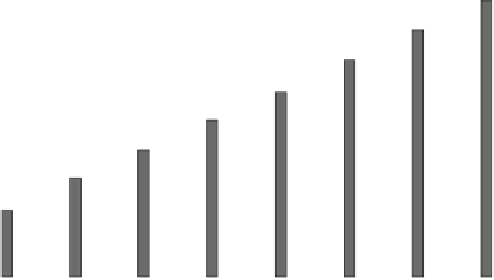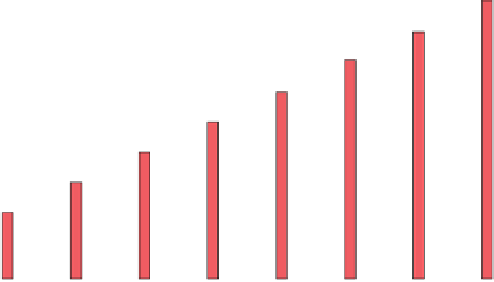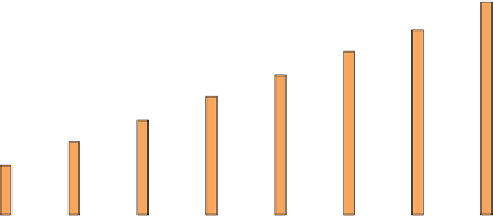Database Reference
In-Depth Information
5.2 Progressive Granularity Changes
In order to analyze what happens as we move from coarse granularity to fine
granularity with respect to the number of tasks, we perform experiments for each
multiple of the number of worker nodes as we move from one task per node to
four tasks per node. The results of this class of experiments follows are similar
to those seen in Fig.
1
and the analysis provided in Sect.
5.1
.
Doubling the Number of Tasks.
In this set of experiments, we consider
what happens when we double the number of tasks from one task per worker to
two. These results are presented in Fig.
2
. When we compare these results with
those found in Fig.
1
and described in Sect.
5.1
, they are very similar. The largest
degree of difference between the two sets of experiments is 3.77 %. The average
degree of difference between a one task per worker setup and the two task per
worker setup is only 1.72 %. The increase in execution time is as a result of the
overhead associated with worker nodes having to request additional work.
Fig. 2.
This graph illustrates the execution times of our workload when we follow a two
tasks per worker splitting rule. During these tests we incrementally perform upgrades
on a subset of the nodes. On the X-axis is the number of matrices multiplied during
the test. On the Y-axis is the execution time in seconds.
To illustrate the effects of the overhead, we consider the change in execu-
tion time between one task per worker and two tasks per worker considering
file size. The percentage difference is 2.91 % on average for the smallest file
size tested, but this difference steadily decreases as low as 1.01 % as the file
sizes increase. Since this difference is not as prominent for the larger file sizes,
we determine that the overhead associated with requesting additional work is

























































Search WWH ::

Custom Search